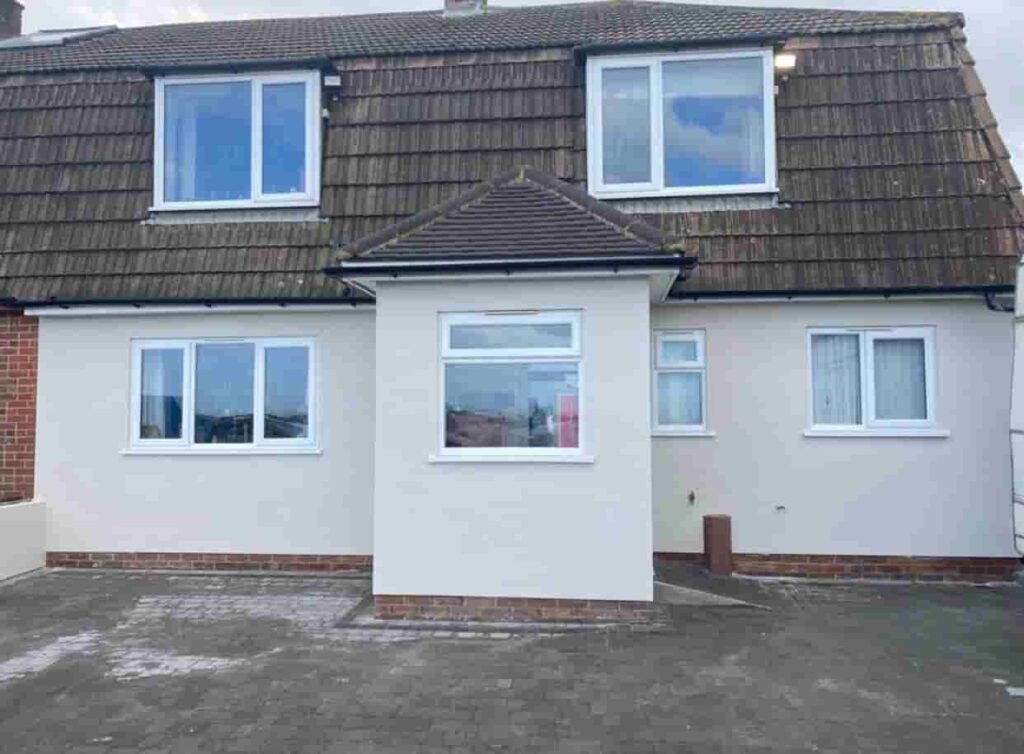Felt roofing is a popular choice for many flat roofs due to its affordability and ease of installation. However, like any roofing material, it’s not immune to problems over time. At Alfreton Roofing Repairs, we’ve seen our fair share of felt roofing failures across Alfreton, Derbyshire, and understanding what’s behind these issues is key to preventing costly repairs and extending the lifespan of your roof. In this blog post, we’ll explore the most common causes of felt roofing failures and how to address them effectively.
1. Poor Installation
One of the leading causes of felt roofing failure is poor installation. If the felt is not properly applied or adhered to the roof surface, it can lead to bubbles, wrinkles, and weak spots. These issues compromise the roof’s ability to withstand the elements, leading to leaks and premature deterioration. It’s crucial to hire experienced professionals to ensure that the felt is installed correctly and securely to avoid problems down the line.
2. Water Pooling (Ponding)
Flat roofs are particularly vulnerable to water pooling, which occurs when rainwater doesn’t drain properly and sits on the roof surface. Felt roofing is designed to be water-resistant, but constant exposure to standing water can weaken the material, leading to cracks and leaks. Regular maintenance and proper drainage systems are essential for preventing water from accumulating and damaging the roof.
3. UV Damage
Over time, felt roofing can be degraded by exposure to the sun’s ultraviolet (UV) rays. Prolonged exposure can cause the felt to become brittle and crack, reducing its effectiveness at protecting your home. Adding a protective coating to the felt can help extend its lifespan by shielding it from harmful UV rays, especially during hot summers in Derbyshire.
4. Thermal Movement
Temperature fluctuations can cause felt roofing to expand and contract, leading to cracks or splits in the material. This is particularly common in climates with significant temperature changes between day and night, or between seasons. The constant movement weakens the roofing material, making it more susceptible to leaks and damage. Installing high-quality felt roofing that is designed to handle thermal movement can reduce the risk of these issues.
5. Inadequate Maintenance
Like any roofing system, felt roofs require regular maintenance to stay in good condition. Over time, debris such as leaves and dirt can accumulate on the roof, blocking drainage systems and trapping moisture. Regular inspections and cleaning are necessary to prevent damage caused by blocked drains or water buildup. Neglecting maintenance can lead to early roofing failure and costly repairs.
6. Ageing and Wear
Felt roofing has a finite lifespan, typically lasting around 10-15 years depending on the quality of materials used and how well it is maintained. As it ages, the felt becomes more prone to cracking, blistering, and general wear and tear. If your felt roof is nearing the end of its lifespan, it’s important to monitor it for signs of damage and consider replacing it before serious issues arise.
Conclusion
Felt roofing is a cost-effective and practical solution for many flat roofs, but like any material, it can experience problems if not properly installed, maintained, or protected from the elements. At Alfreton Roofing Repairs, we offer expert felt roofing installation, repair, and maintenance services in Alfreton, Derbyshire. By addressing common issues such as poor installation, water pooling, and UV damage, we ensure that your felt roof stays in top condition for years to come. Contact us today to schedule an inspection or to learn more about how we can help extend the life of your felt roof.
Call us on: 01773 304 893
Click here to find out more about Alfreton Roofing Repairs
Click here to complete our contact form and see how we can help with your roofing needs.

